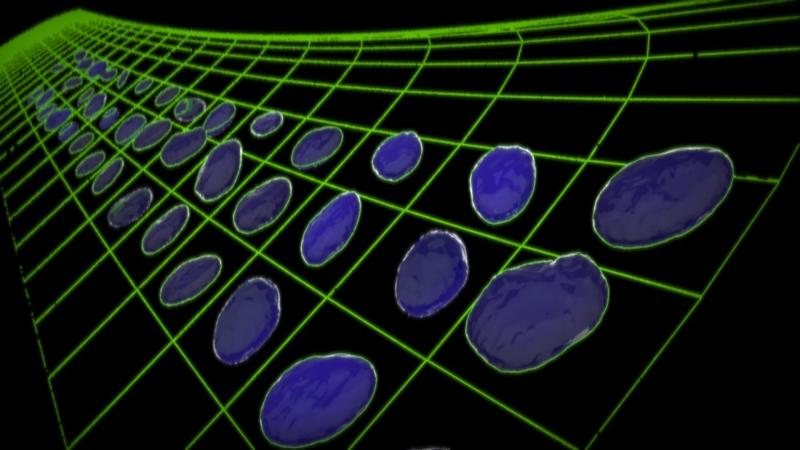
The nucleus of the cell holds our genetic material and is a vital part of our cell. Apart from what they carry, how they look also plays a crucial role in diagnosing many diseases. In a recent study, researchers at the Indian Institute of Science (IISc), Bengaluru, have developed a mechanical model to quantify the shape of the nucleus and predict the biochemistry within a cell. They have used this model to show how Hepatitis C virus changes the nuclear mechanics of cells affected by it.
“Traditionally, biology is thought to be chemistry in action. Mechanics and other electrical phenomena are seen as just a consequence. Here, we are showing, probably for the first time, that by looking at the mechanics, you can predict the chemistry,” says Dr Sreenath Balakrishnan from IISc.
He is the lead author of the study published in the Biophysical Journal. It was funded by the Department of Biotechnology (DBT), Department of Science and Technology (DST), Council for Scientific and Industrial Research (CSIR), and Indian Council of Medical Research (ICMR).
The proposed model has two opposing forces, acting from the inside and outside of the nuclear membrane. Within the nucleus, the loosely packed chromatin that contains the DNA, and the ambient osmotic pressure create an outward expansive force. Microtubules and actin, which act as the skeleton of the cell, giving it shape, exert compressive force on the nucleus. The balance between these two forces at the border of the nucleus, called the nuclear envelope, gives the nucleus its shape.
During diseases, however, this balance can change. For example, if the force inside the nucleus becomes stronger than that from outside, the size of the nucleus will increase. Conversely, if the nuclear envelope becomes stiffer, the size of the nucleus will decrease. The model proposed in the current study uses the surface area and volume of the nucleus to quantify these forces and stiffness. These parameters can then differentiate healthy cells from diseased cells.
“One of the highlights of the model is that it can make a prediction that is true for every nucleus. It does not give results based on averages, which is the usual norm in biology and the limitation. There are very few models that can predict a relationship which is satisfied by every individual cell,” says Dr Balakrishnan.
The researchers used liver cancer cells to validate their model. They introduced RNA from Hepatitis C virus into these cells and observed changes in the shape of the nucleus. Using three-dimensional images from a microscope, they found that the infected cells showed significantly larger nuclei. These results were consistent with the predictions of their model.
Besides, the researchers found a considerably low amount of lamin, a vital structural protein of the nuclear envelope, in the affected cells. They found that if they introduced DNA from outside the cells that could make more lamin, it made the nucleus to return to its original size. These results imply that the Hepatitis C infection makes the size of the nucleus bigger, potentially by reducing lamin and thereby compromising the structure of the envelope that holds the nucleus together. It also shows that the model developed by the researchers can be used to characterise changes in mechanical properties of cell structures caused by diseases.
The proposed model, the researchers believe, acts as a tool to characterise other diseases, opening a potential new avenue called “mechano-diagnostics”, which means diagnosing diseases using mechanical properties. Changes in the mechanical forces inside a cell can be measured easily with devices as small as a mobile phone chip. Such a device would also be reusable and would not get consumed during the process, unlike chemicals. This method can be significantly cheaper, faster and does not require consumable items, making them ideal for countries like India.
"However, we are at least a decade away from such devices becoming the norm,"conclude the researchers.
This article has been run past the researchers, whose work is covered, to ensure accuracy.






